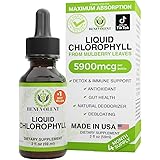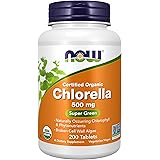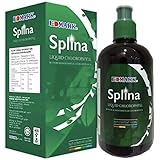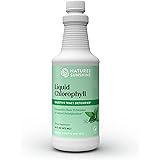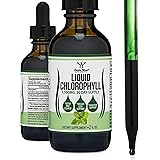As highlighted in the video above, undergoing alcohol detox is a profoundly challenging and potentially life-threatening process, often described as the exact opposite of alcohol consumption itself. Unlike many other forms of substance withdrawal, the body’s reaction to ceasing alcohol intake can trigger a cascade of severe physical and psychological symptoms. This intense reaction underscores why attempting to detox from alcohol without professional medical guidance is exceptionally dangerous, akin to navigating a complex, perilous storm without a compass or experienced captain.
The severity of alcohol withdrawal syndrome stems from the brain and central nervous system adapting to the constant presence of alcohol. When alcohol, a depressant, is suddenly removed, the body’s overstimulated systems go into overdrive, leading to the distressing symptoms we often associate with alcohol withdrawal. Understanding what happens during this critical period is the first step toward seeking safe and effective help for alcohol dependency, recognizing the crucial role medical supervision plays in managing this formidable process.
Understanding Alcohol Detox: The Harsh Reality
The experience of alcohol detoxification is characterized by a range of symptoms that emerge as the body struggles to rebalance itself without alcohol. Initially, these symptoms can feel like a severe hangover, but they quickly escalate into something far more serious and debilitating. The body, accustomed to the sedating effects of alcohol, reacts with hyperactivity when its depressant is removed, causing a surge in nervous system activity. This biological upheaval is precisely why the detox journey is so acutely uncomfortable and fraught with peril, making proper support an absolute necessity.
Initial Stages of Alcohol Withdrawal
Within a few hours to a day after the last drink, the first signs of alcohol withdrawal typically begin to surface, creating a noticeable shift in physical and mental states. Individuals may experience a heightened sense of irritability, a feeling of unease that can quickly turn into full-blown anxiety, making calm thought difficult. Sleep often becomes elusive, with insomnia preventing restful recuperation, further exacerbating the feeling of being unwell.
These early stages also frequently involve significant physical discomfort, including general nausea and bouts of vomiting, which can lead to dehydration and electrolyte imbalances. Tremors, often visible as involuntary shaking of the hands, are another common indicator that the body is reacting strongly to the absence of alcohol. This initial phase, while distressing, is merely the prelude to potentially more severe complications if left unaddressed, highlighting the progressive nature of the withdrawal symptoms.
Severe Withdrawal Symptoms and Risks
As the detox process progresses, particularly for those with a long history of heavy drinking, the symptoms can intensify dramatically, posing significant health risks. Rapid heart rate becomes a concern, putting undue stress on the cardiovascular system, which can be dangerous for individuals with underlying heart conditions. Blood pressure can also soar, increasing the risk of cardiac events during this vulnerable period, underscoring the body’s struggle to cope.
In the most severe cases, alcohol withdrawal can manifest as hallucinations, where individuals see, hear, or feel things that aren’t there, disorienting them profoundly. More critically, generalized tonic-clonic seizures, previously known as grand mal seizures, are a terrifying possibility, representing a serious neurological emergency that can be fatal. These severe complications demonstrate why medical detox is not just recommended but is absolutely crucial for managing the life-threatening aspects of alcohol withdrawal, ensuring safety and appropriate intervention.
The Critical Timeline of Alcohol Withdrawal
The progression of alcohol withdrawal symptoms follows a somewhat predictable, though highly individualized, timeline, with different stages presenting varying levels of intensity and risk. The speed at which symptoms appear and their severity depend on factors like the duration and quantity of alcohol consumed, an individual’s overall health, and any co-occurring medical conditions. Understanding this timeline is vital for anticipating what to expect and preparing for effective intervention, demonstrating that detox is a dynamic, evolving process.
Early Onset: Hours After Last Drink
The first noticeable signs of withdrawal typically begin to manifest surprisingly quickly, often within six to twelve hours after the last alcoholic drink. At this stage, symptoms usually include anxiety, tremors (shaking hands), headache, nausea, vomiting, and a rapid heart rate, making for a distinctly uncomfortable experience. It’s during this initial window that the body begins its frantic attempts to compensate for the sudden absence of its familiar depressant, initiating a rapid physiological adjustment.
Many individuals might initially mistake these early symptoms for a particularly bad hangover, but their persistence and escalation signal something far more serious. This immediate onset serves as a critical warning sign that the body is entering a state of withdrawal, a crucial period where professional medical assessment can guide the next steps. Ignoring these early warnings can pave the way for more severe and dangerous complications as the detox progresses.
Peak Withdrawal: A Challenging Phase
The most intense and dangerous phase of alcohol withdrawal typically occurs between 24 and 72 hours (one to three days) after cessation, marking the peak of withdrawal symptoms. During this period, the risk of developing more severe symptoms, such as hallucinations (visual, auditory, or tactile), and seizures, increases significantly. This stage is particularly perilous and often necessitates around-the-clock medical supervision, as the body’s systems are under immense strain.
Delirium tremens (DTs), a severe form of alcohol withdrawal, can also emerge within this timeframe, characterized by profound confusion, rapid heart rate, high blood pressure, fever, and extreme agitation. The development of DTs is a medical emergency with a high mortality rate if not treated properly, highlighting the acute danger associated with this challenging phase. This period represents the eye of the storm in the alcohol detox process, requiring expert management.
Lingering Effects: Beyond the Acute Stage
While the acute withdrawal symptoms generally subside within five to seven days, the effects of alcohol withdrawal syndrome can linger for weeks or even months for some individuals. This extended period, often referred to as Post-Acute Withdrawal Syndrome (PAWS), includes symptoms like persistent anxiety, insomnia, depression, irritability, and difficulty concentrating. These prolonged symptoms reflect the brain’s slower process of re-calibrating its neurochemical balance after prolonged alcohol exposure.
PAWS can be incredibly frustrating and challenging, often contributing to relapse if not properly managed with ongoing therapeutic support and coping strategies. It is a stark reminder that the journey to recovery extends far beyond the initial detoxification process, emphasizing the need for comprehensive aftercare. Understanding these lingering effects helps individuals prepare for the long-term commitment required for sustainable sobriety, providing crucial insights into the continuous nature of healing.
Why Medical Guidance is Non-Negotiable for Alcohol Detox
The video above underscores a vital truth: alcohol detox treatment is the most serious and life-threatening of all drug withdrawals, making medical guidance not merely advisable but absolutely essential. Unlike withdrawal from some other substances, alcohol withdrawal can lead to direct physiological collapse, including fatal cardiac events or uncontrolled seizures, if not managed by healthcare professionals. This inherent danger differentiates alcohol detox from many other withdrawal experiences, placing it in a unique category of high-risk medical procedures.
The Dangers of Unsupervised Detox
Attempting unsupervised detox at home can have catastrophic consequences, as the unpredictable nature of alcohol withdrawal makes it a medical roulette. Without trained personnel to monitor vital signs and intervene with medications, individuals are at severe risk of medical emergencies. Seizures can occur suddenly, leading to falls and injuries, or even proving fatal if brain activity becomes too dysregulated, demonstrating the immediate and profound dangers.
Moreover, the extreme discomfort of withdrawal symptoms—intense nausea, vomiting, and anxiety—can easily lead to dehydration, electrolyte imbalances, and severe emotional distress, often causing individuals to give up and relapse. The intense physical and psychological pain can also trigger suicidal thoughts in vulnerable individuals, highlighting the comprehensive risks involved. Therefore, the supposed convenience of home detox is overwhelmingly outweighed by its inherent and often deadly dangers.
Benefits of Medical Supervision During Detox
Engaging in medically supervised detox provides a safe and structured environment where trained medical professionals can monitor the individual’s condition 24/7. This constant oversight ensures that any emergent symptoms or complications are immediately addressed, significantly reducing the risk of severe outcomes like seizures or delirium tremens. Medical staff can accurately assess the severity of withdrawal and tailor treatment plans to each person’s specific needs, providing personalized and effective care.
Furthermore, medical settings offer access to medications designed to alleviate withdrawal symptoms, making the process more manageable and humane. These medications, which help stabilize the body and calm the nervous system, are a cornerstone of safe alcohol detox, preventing much of the suffering and risk associated with unmanaged withdrawal. This comprehensive support transforms a dangerous process into a carefully controlled and significantly safer one, prioritizing patient well-being above all else.
Medication-Assisted Treatment (MAT) for Alcohol Withdrawal
Medication-assisted treatment (MAT) is a cornerstone of modern alcohol detox, employing specific pharmacological interventions to ease withdrawal symptoms and prevent serious complications. Benzodiazepines, such as lorazepam or diazepam, are commonly prescribed to calm the central nervous system, reduce anxiety, prevent seizures, and manage tremors, effectively mitigating the hyper-excitability of the brain. These medications are carefully titrated and administered under strict medical supervision, ensuring patient safety.
In addition to benzodiazepines, other medications may be used to manage specific symptoms, such as anti-nausea drugs for vomiting, or beta-blockers for rapid heart rate and high blood pressure. These supportive medications work in concert to stabilize the patient, making the alcohol detox process as comfortable and safe as possible. MAT represents a critical advancement in addiction medicine, offering a scientifically proven path to navigate the initial, most challenging phase of recovery from alcohol dependence.
Beyond Detox: Starting the Recovery Journey
Completing an alcohol detox program is a monumental first step, but it is just the beginning of a lifelong journey toward sustained sobriety and well-being. The physical clearing of alcohol from the body, while crucial, does not address the underlying psychological and behavioral factors that contributed to alcohol dependency. Therefore, effective recovery strategies must extend far beyond the detox phase, embracing a holistic approach to healing.
Preparing for Long-Term Sobriety
After the acute withdrawal management phase, individuals need to transition into ongoing treatment programs that address the root causes of their addiction. This often includes various forms of therapy, such as cognitive-behavioral therapy (CBT) or dialectical behavior therapy (DBT), which equip individuals with coping mechanisms and strategies to manage cravings and avoid relapse. Understanding triggers and developing healthy responses to stress are crucial components of this stage.
The Path to Sustainable Recovery
Sustainable recovery typically involves a combination of individual counseling, group therapy, and participation in support groups like Alcoholics Anonymous (AA). These resources provide a community of support, shared experiences, and accountability, which are invaluable for maintaining sobriety over the long term. The journey of recovery from alcohol dependency is unique for everyone, but it always requires ongoing commitment, resilience, and consistent support to achieve lasting freedom from addiction.
Demystifying Detox: Your Questions Answered
What is alcohol detox?
Alcohol detox is the process your body goes through when you stop drinking alcohol after a period of heavy use. It involves severe physical and psychological reactions as your body tries to rebalance without alcohol.
What are some common early symptoms of alcohol withdrawal?
Common early symptoms include anxiety, irritability, difficulty sleeping (insomnia), nausea, vomiting, and tremors (shaking hands). These can start within hours of your last drink.
Why is it important to have medical supervision during alcohol detox?
Medical supervision is crucial because alcohol detox can be life-threatening, potentially causing seizures, severe heart problems, or a dangerous condition called Delirium Tremens (DTs). Medical professionals can monitor your condition and provide medications to ensure your safety.
How long do alcohol withdrawal symptoms usually last?
Initial symptoms can appear within 6-12 hours and often peak between 24-72 hours after the last drink. While acute symptoms generally subside within 5-7 days, some effects can linger for weeks or months.


